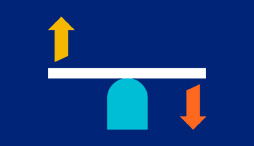Health Action Council Solution

Obesity epidemic
New insights from a whole-person health perspective
For this year’s white paper, the Health Action Council (HAC) and UnitedHealth Group focus on a major trend: the obesity crisis. Based on a deep dive into data drawn from HAC and UnitedHealthcare members across the country, this analysis offers new insights from a whole-person health perspective. It illuminates the epidemic by providing detailed views into population dynamics, including the physical and mental health consequences of obesity and associated spend trends and cost differentials.
Our pillars
Our collaboration with Health Action Council is inspired by employers for employers and is based on the following pillars:

Risk Mitigation
Manage the risk within your populations to achieve short- and long-term cost savings.

Consumer Experience
Give employees the best service and use group purchasing for dedicated member resources.

Financial Incentives
Help employers save money and offer credits for being a member.

Continuously Improve
Get better each year to outpace marketplace solutions.
Value of Health Action Council participation
Our holistic approach
We are committed to delivering a solution that provides the necessary resources that may help to lower costs in both the short and long term. Shown below are the potential advantages to participating with UnitedHealthcare through our Health Action Council relationship:

